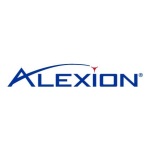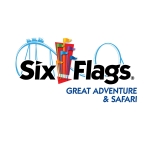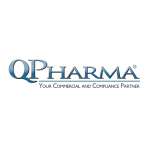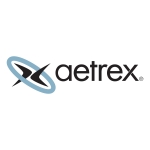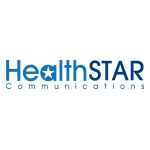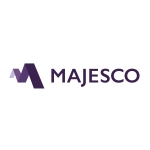Results showed treatment with Reblozyl plus best supportive care improved anemia in 77% of patients compared to placebo
Reblozyl was generally well tolerated and improvements in hemoglobin correlated with improved patient-reported outcomes over a continuous 12-week interval
In the study, 89.6% of patients treated with Reblozyl remained transfusion free vs. 67.3% of patients in the placebo arm at weeks 1-24
Results featured in Presidential Symposium of European Hematology Association’s Virtual Congress as one of top six abstracts submitted
PRINCETON, N.J. & CAMBRIDGE, Mass. — (BUSINESS WIRE) — $BMY #BEYOND—Bristol Myers Squibb (NYSE: BMY) and Acceleron Pharma Inc. (NASDAQ: XLRN) today announced the first data from the Phase 2 BEYOND study evaluating Reblozyl® (luspatercept-aamt), a first-in-class erythroid maturation agent, plus best supportive care in adult patients with non-transfusion dependent (NTD) beta thalassemia, were presented at the European Hematology Association (EHA) 2021 Virtual Congress as part of its Presidential Symposium (Abstract #S101). Results demonstrated that 77.7% of patients treated with Reblozyl achieved a hemoglobin increase (≥1.0 gram/deciliter) compared to 0% of patients in the placebo arm. Changes in patient-reported outcomes also correlated with increases in hemoglobin. NTD beta thalassemia is a term used to describe patients who do not require lifelong regular red blood cell (RBC) transfusions for survival, although they may require occasional or even frequent transfusions, usually for defined periods of time.
“Patients with non-transfusion dependent beta thalassemia experience chronic anemia and iron overload, which may lead to a range of clinical complications, and treatment options are greatly needed,” said Ali Taher, M.D., Ph.D., FRCP, of American University of Beirut and BEYOND study investigator. “Results from the BEYOND study show the clinical potential of luspatercept to sustain the elevation of hemoglobin levels in a majority of patients regardless of their baseline hemoglobin status, and improvements were noted in quality of life outcomes in adults with non-transfusion dependent beta thalassemia.”
Reblozyl is the first and only erythroid maturation agent approved in the European Union, United States and Canada to address anemia-associated beta thalassemia and lower-risk myelodysplastic syndromes, representing an important class of therapy for eligible patients.1,2,3
“We are very encouraged by the magnitude of improvement seen among Reblozyl-treated patients in the BEYOND trial,” said Habib Dable, President and Chief Executive Officer of Acceleron. “These data further strengthen our confidence in Reblozyl’s potential to become a meaningful option for this important, underserved patient population around the world.”
“The results we are presenting at EHA continue to highlight multiple benefits observed with Reblozyl to treat anemia and achieve transfusion independence, as well as show its potential for patients with non-transfusion dependent disease who face a range of serious, often lifelong health complications,” said Noah Berkowitz, M.D., Ph.D., senior vice president, Hematology Development, Bristol Myers Squibb. “Along with our partners at Acceleron, we are committed to advancing our clinical program for Reblozyl for patients living with anemia-associated blood disorders.”
BEYOND Study Results
BEYOND is a Phase 2, randomized, double-blind, placebo-controlled multi-center study to determine the efficacy and safety of Reblozyl versus placebo in adults with non-transfusion dependent (NTD) beta thalassemia. Eligible patients were ≥18 years with beta thalassemia or hemoglobin (Hb) E beta thalassemia and received ≤5 red blood cell (RBC) units in the 24 weeks prior to randomization, with mean baseline Hb ≤10.0 gram/deciliter (g/dL).4
In the study, 145 patients were randomized 2:1 to receive Reblozyl, 1 milligram/kilogram (titration up to 1.25 mg/kg) or placebo subcutaneously every 3 weeks for ≥48 weeks. Patients in both arms continued to receive best supportive care, including RBC transfusions as indicated and iron chelation therapy. The primary endpoint was achievement of ≥1.0 g/dL mean Hb increase from baseline over a continuous 12-week interval from weeks 13-24 in the absence of RBC transfusions. Secondary endpoints included proportion of patients who remained transfusion free over weeks 1-24, who achieved mean Hb increase of ≥1.5 g/dL from baseline to weeks 13-24, and mean change in NTD beta thalassemia patient-reported outcome tiredness and weakness (NTDT-PRO T/W) domain scores (higher scores reflect worse quality of life; QoL).4
Over a continuous 12-week interval from weeks 13-24 in the absence of RBC transfusions, 74 of 96 (77.1%) patients in the Reblozyl treatment arm achieved the study’s primary endpoint, ≥1.0 g/dL mean Hb increase from baseline, versus 0 of 49 (0%) patients in the placebo arm (P<0.0001). The primary endpoint was achieved by 40 of 55 (72.7%) patients in the Reblozyl arm with mean baseline Hb of <8.5 g/dL versus 0 (0%) of patients in the placebo arm (P<0.0001), and 34 of 41 patients (82.9%) with mean baseline Hb of ≥8.5 g/dL versus 0 patients (0%) in the placebo arm (P<0.0001). In a key secondary endpoint of the study, during weeks 13-24, 50 of 96 patients (52.1%) in the Reblozyl arm achieved mean Hb increase of ≥1.5 g/dL compared to baseline versus 0 patients (0%) in the placebo arm (P<0.0001). 89.6% of patients in the Reblozyl arm remained transfusion free at weeks 1-24 versus 67.3% of patients in the placebo arm (P=0.0013). Improvements in patient-reported QoL outcomes (tiredness and weakness) were also observed to correlate with Hb increases.
The most common treatment-emergent adverse events of any grade occurring in ≥5% of patients were bone pain (36.5% Reblozyl versus 6.1% placebo), headache (30.2% versus 20.4%), and arthralgia (29.2% versus 14.3%). No malignancies or thromboembolic events were reported in patients treated with Reblozyl.
About Beta Thalassemia
Beta thalassemia is an inherited blood disorder caused by a genetic defect in hemoglobin. It is one of the most common autosomal recessive disorders, and the total annual incidence of symptomatic individuals is estimated at 1 in 100,000 people globally and 1 in 10,000 people in the European Union.5 The disease is associated with ineffective erythropoiesis, which results in the production of fewer and less healthy red blood cells (RBCs), often leading to severe anemia—a condition that can be debilitating and can lead to other complications for patients—as well as other serious health issues. Treatment options for anemia associated with beta thalassemia are limited, consisting mainly of frequent RBC transfusions that have the potential to contribute to iron overload, which can cause serious complications such as organ damage.5 Non-transfusion dependent thalassemia is a term used to describe patients who do not require lifelong regular transfusions for survival, although they may experience a range of clinical complications and require occasional or even frequent transfusions, usually for defined periods of time.6
About Reblozyl®
Reblozyl (luspatercept-aamt), a first-in-class erythroid maturation agent, promotes late-stage red blood cell maturation in animal models. Bristol Myers Squibb and Acceleron are jointly developing Reblozyl as part of a global collaboration. Reblozyl is currently approved in the U.S. for the treatment of:
- anemia in adult patients with beta thalassemia who require regular red blood cell transfusions, and
- anemia failing an erythropoiesis stimulating agent and requiring 2 or more red blood cell units over 8 weeks in adult patients with very low- to intermediate-risk myelodysplastic syndromes with ring sideroblasts (MDS-RS) or with myelodysplastic/myeloproliferative neoplasm with ring sideroblasts and thrombocytosis (MDS/MPN-RS-T).
Reblozyl is not indicated for use as a substitute for red blood cell transfusions in patients who require immediate correction of anemia.
U.S. Important Safety Information
WARNINGS AND PRECAUTIONS
Thrombosis/Thromboembolism
In adult patients with beta thalassemia, thromboembolic events (TEE) were reported in 8/223 (3.6%) REBLOZYL-treated patients. TEEs included deep vein thrombosis, pulmonary embolus, portal vein thrombosis, and ischemic stroke. Patients with known risk factors for thromboembolism (splenectomy or concomitant use of hormone replacement therapy) may be at further increased risk of thromboembolic conditions. Consider thromboprophylaxis in patients at increased risk of TEE. Monitor patients for signs and symptoms of thromboembolic events and institute treatment promptly.
Hypertension
Hypertension was reported in 10.7% (61/571) of REBLOZYL-treated patients. Across clinical studies, the incidence of Grade 3 to 4 hypertension ranged from 1.8% to 8.6%. In patients with beta thalassemia with normal baseline blood pressure, 13 (6.2%) patients developed systolic blood pressure (SBP) ≥130 mm Hg and 33 (16.6%) patients developed diastolic blood pressure (DBP) ≥80 mm Hg. In adult patients with MDS with normal baseline blood pressure, 26 (29.9%) patients developed SBP ≥130 mm Hg and 23 (16.4%) patients developed DBP ≥80 mm Hg. Monitor blood pressure prior to each administration. Manage new or exacerbations of preexisting hypertension using anti-hypertensive agents.
Embryo-Fetal Toxicity
REBLOZYL may cause fetal harm when administered to a pregnant woman. REBLOZYL caused increased post-implantation loss, decreased litter size, and an increased incidence of skeletal variations in pregnant rat and rabbit studies. Advise pregnant women of the potential risk to a fetus. Advise females of reproductive potential to use effective contraception during treatment and for at least 3 months after the final dose.
ADVERSE REACTIONS
Beta Thalassemia
- Serious adverse reactions occurred in 3.6% of patients on REBLOZYL. Serious adverse reactions occurring in 1% of patients included cerebrovascular accident and deep vein thrombosis. A fatal adverse reaction occurred in 1 patient treated with REBLOZYL who died due to an unconfirmed case of acute myeloid leukemia (AML). Most common adverse reactions (at least 10% for REBLOZYL and 1% more than placebo) were headache (26% vs 24%), bone pain (20% vs 8%), arthralgia (19% vs 12%), fatigue (14% vs 13%), cough (14% vs 11%), abdominal pain (14% vs 12%), diarrhea (12% vs 10%) and dizziness (11% vs 5%).
Myelodysplastic Syndromes
- Grade >3 (≥2%) adverse reactions included fatigue, hypertension, syncope and musculoskeletal pain. A fatal adverse reaction occurred in 5 (2.1%) patients.
- The most common (≥10%) adverse reactions included fatigue, musculoskeletal pain, dizziness, diarrhea, nausea, hypersensitivity reactions, hypertension, headache, upper respiratory tract infection, bronchitis, and urinary tract infection.
LACTATION
It is not known whether REBLOZYL is excreted into human milk or absorbed systemically after ingestion by a nursing infant. REBLOZYL was detected in milk of lactating rats. When a drug is present in animal milk, it is likely that the drug will be present in human milk. Because many drugs are excreted in human milk, and because of the unknown effects of REBLOZYL in infants, a decision should be made whether to discontinue nursing or to discontinue treatment. Because of the potential for serious adverse reactions in the breastfed child, breastfeeding is not recommended during treatment and for 3 months after the last dose.
Please see full Prescribing Information and Summary of Product Characteristics for REBLOZYL
Bristol Myers Squibb: Creating a Better Future for People with Cancer
Bristol Myers Squibb is inspired by a single vision—transforming patients’ lives through science. The goal of the company’s cancer research is to deliver medicines that offer each patient a better, healthier life and to make cure a possibility. Building on a legacy across a broad range of cancers that have changed survival expectations for many, Bristol Myers Squibb researchers are exploring new frontiers in personalized medicine, and through innovative digital platforms, are turning data into insights that sharpen their focus. Deep scientific expertise, cutting-edge capabilities and discovery platforms enable the company to look at cancer from every angle. Cancer can have a relentless grasp on many parts of a patient’s life, and Bristol Myers Squibb is committed to taking actions to address all aspects of care, from diagnosis to survivorship. Because as a leader in cancer care, Bristol Myers Squibb is working to empower all people with cancer to have a better future.
About Bristol Myers Squibb
Bristol Myers Squibb is a global biopharmaceutical company whose mission is to discover, develop and deliver innovative medicines that help patients prevail over serious diseases. For more information about Bristol Myers Squibb, visit us at BMS.com or follow us on LinkedIn, Twitter, YouTube, Facebook and Instagram.
About Acceleron
Acceleron is a biopharmaceutical company dedicated to the discovery, development, and commercialization of therapeutics to treat serious and rare diseases. Acceleron’s leadership in the understanding of TGF-beta superfamily biology and protein engineering generates innovative compounds that engage the body’s ability to regulate cellular growth and repair.
Acceleron focuses its commercialization, research, and development efforts in hematologic and pulmonary diseases. In hematology, Acceleron and its global collaboration partner, Bristol Myers Squibb, are co-promoting REBLOZYL® (luspatercept-aamt), the first and only approved erythroid maturation agent, in the United States for the treatment of anemia in certain blood disorders. The Companies are also developing luspatercept for the treatment of chronic anemia in patient populations of MDS, beta-thalassemia, and myelofibrosis. In pulmonary, Acceleron is developing sotatercept for the treatment of pulmonary arterial hypertension, having recently reported positive topline results of the Phase 2 PULSAR trial.
For more information, please visit https://acceleronpharma.com. Follow Acceleron on Social Media: @AcceleronPharma and LinkedIn.
Bristol Myers Squibb Cautionary Statement Regarding Forward-Looking Statements
This press release contains “forward-looking statements” within the meaning of the Private Securities Litigation Reform Act of 1995 regarding, among other things, the research, development and commercialization of pharmaceutical products. All statements that are not statements of historical facts are, or may be deemed to be, forward-looking statements. Such forward-looking statements are based on historical performance and current expectations and projections about our future financial results, goals, plans and objectives and involve inherent risks, assumptions and uncertainties, including internal or external factors that could delay, divert or change any of them in the next several years, that are difficult to predict, may be beyond our control and could cause our future financial results, goals, plans and objectives to differ materially from those expressed in, or implied by, the statements. These risks, assumptions, uncertainties and other factors include, among others, that future study results will be consistent with the results to date, that Reblozyl plus best supportive care may not receive regulatory approval for the additional indication described in this release in the currently anticipated timeline or at all and, if approved, whether such combination treatment for such additional indication described in this release will be commercially successful. No forward-looking statement can be guaranteed. Forward-looking statements in this press release should be evaluated together with the many risks and uncertainties that affect Bristol Myers Squibb’s business and market, particularly those identified in the cautionary statement and risk factors discussion in Bristol Myers Squibb’s Annual Report on Form 10-K for the year ended December 31, 2020, as updated by our subsequent Quarterly Reports on Form 10-Q, Current Reports on Form 8-K and other filings with the Securities and Exchange Commission. The forward-looking statements included in this document are made only as of the date of this document and except as otherwise required by applicable law, Bristol Myers Squibb undertakes no obligation to publicly update or revise any forward-looking statement, whether as a result of new information, future events, changed circumstances or otherwise.
Acceleron Cautionary Statement Regarding Forward-Looking Statements
This press release contains forward-looking statements about Acceleron’s strategy, future plans and prospects, including statements regarding the development and commercialization of Acceleron’s compounds, the timeline for clinical development and regulatory approval of Acceleron’s compounds, the expected timing for reporting of data from ongoing clinical trials, and the potential of Reblozyl® (luspatercept-aamt) as a therapeutic drug. The words “anticipate,” “believe,” “could,” “estimate,” “expect,” “goal,” “intend,” “may,” “plan,” “potential,” “project,” “should,” “target,” “will,” “would,” and similar expressions are intended to identify forward-looking statements, although not all forward-looking statements contain these identifying words.
Actual results could differ materially from those included in the forward-looking statements due to various factors, risks and uncertainties, including, but not limited to, that the results of any clinical trials may not be predictive of the results or success of other clinical trials, that regulatory approval of Acceleron’s compounds in one indication or country may not be predictive of approval in another indication or country, that the development of Acceleron’s compounds will take longer and/or cost more than planned, that Acceleron or its collaboration partner, Bristol-Myers Squibb Company (“BMS”), will be unable to successfully complete the clinical development of Acceleron’s compounds, that Acceleron or BMS may be delayed in initiating, enrolling or completing any clinical trials, and that Acceleron’s compounds will not receive regulatory approval or become commercially successful products. These and other risks and uncertainties are identified under the heading “Risk Factors” included in Acceleron’s most recent Annual Report on Form 10-K, Quarterly Report on Form 10-Q, and other filings that Acceleron has made and may make with the SEC in the future.
The forward-looking statements contained in this press release are based on management’s current views, plans, estimates, assumptions, and projections with respect to future events, and Acceleron does not undertake and specifically disclaims any obligation to update any forward-looking statements.
References:
- REBLOZYL Summary of Product Characteristics. Accessed May 2021.
- REBLOZYL U.S. Prescribing Information. Accessed May 2021.
- REBLOZYL Canada Product Monograph. Accessed May 2021.
- ClinicalTrials.gov. A Study to Determine the Efficacy and Safety of Luspatercept in Adults With Non Transfusion Dependent Beta (β)-Thalassemia (BEYOND). Available at: https://www.clinicaltrials.gov/ct2/show/NCT03342404?term=BEYOND&cond=Beta-Thalassemia&rank=2. Accessed May 2021.
- Galanello R, Origa R. Beta thalassemia. Orphanet Journal of Rare Diseases. 2010;5(11). Available at: https://ojrd.biomedcentral.com/articles/10.1186/1750-1172-5-11. Accessed May 2021.
- Musallam, K. M., Rivella, S., Vichinsky, E., & Rachmilewitz, E. A. (2013). Non-transfusion-dependent thalassemias. Haematologica, 98(6), 833–844. https://doi.org/10.3324/haematol.2012.066845. Accessed May 2021.
corporatefinancial-news
Contacts
Bristol Myers Squibb
Media Inquiries:
media@bms.com
609-252-3345
Investors:
Tim Power
609-252-7509
Nina Goworek
908-673-9711
Acceleron Pharma Inc.
Investors:
Jamie Bernard, IRC, 617-301-9650
Associate Director, Investor Relations
Media:
Matt Fearer, (617) 301-9557
Senior Director, Corporate Communication

